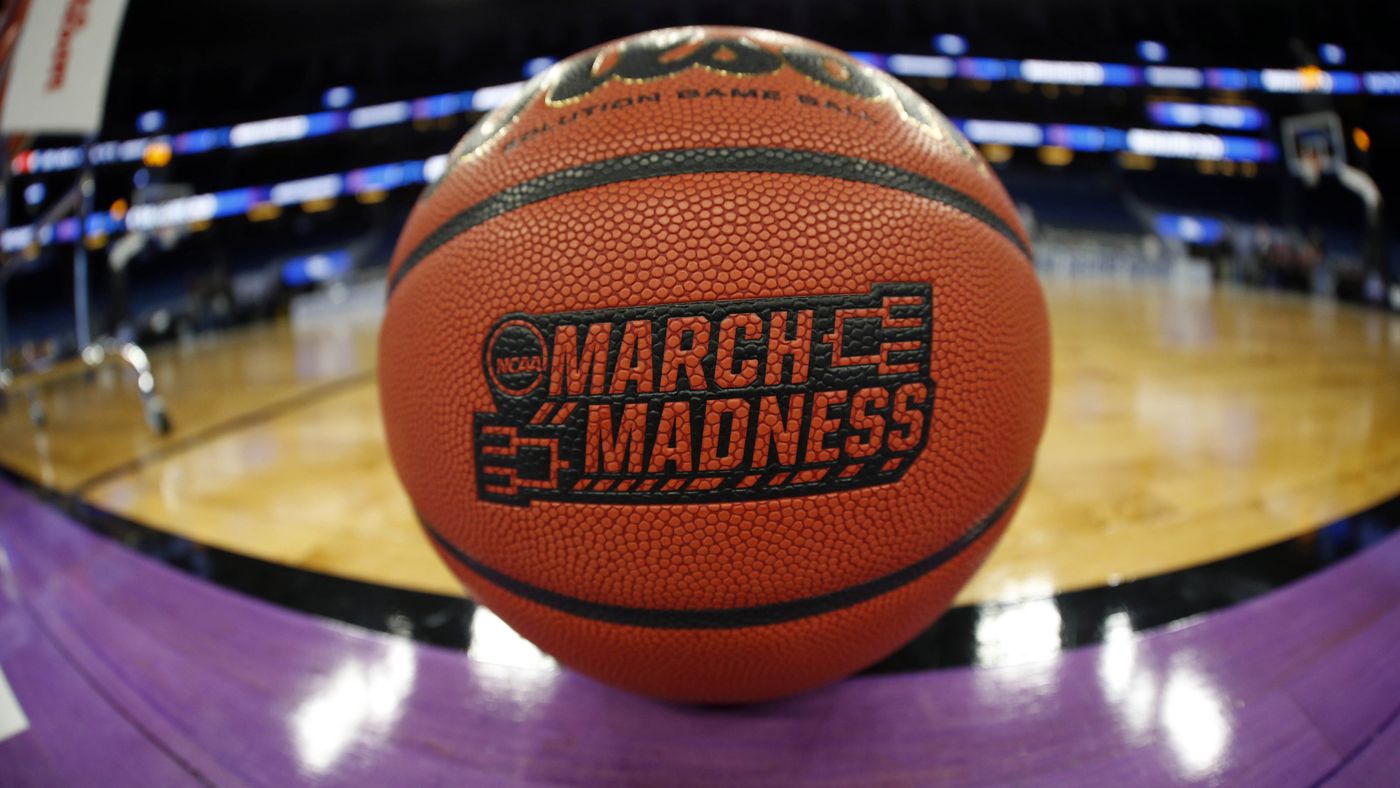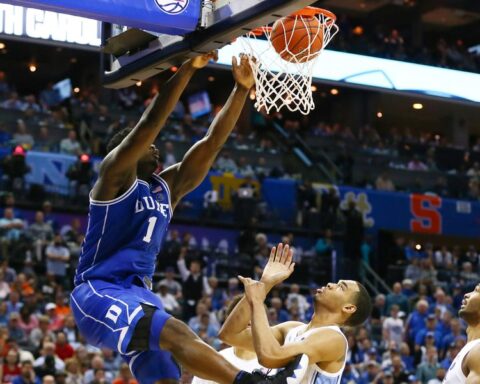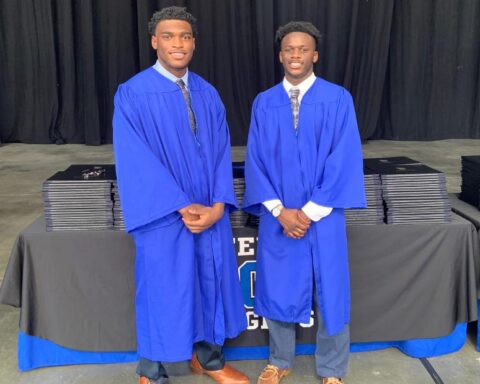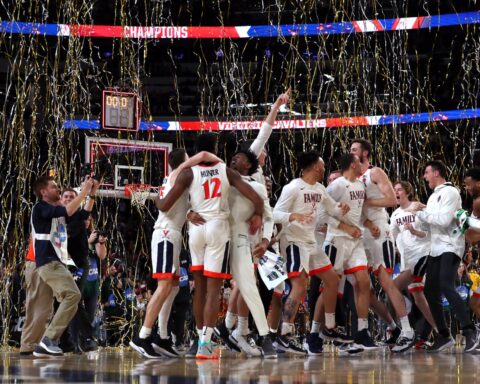By Derrick Z. Jackson
If you watch the National Collegiate Athletic Association’s Division 1 Men’s basketball tournament for pure sports entertainment, fine. If you watch to cheer your alma mater, I understand. If you watch because on any given night, a Lilliputian like Florida Atlantic can topple a Tennessee and Kansas State on its way to the Final Four, I get it as an ex-sportswriter.
Just don’t think it’s anything more than that. The Cinderella stories cannot hide the rotten pumpkins that litter the landscape. The pretense that the sport has anything to do with education—especially for Black men—is as absurd as ever.
That is evident from the National Collegiate Athletic Association’s Division 1 tournament, which concludes on Monday. Of the 68 schools in the so-called March Madness, more than half (40) graduate less than half of their original Black recruits. For all that colleges trample each other to woo Black stars out of high school, a whopping 27 universities graduate no more than 1 of every 3 of their prizes.
That includes perennial powers UCLA, Tennessee, Duke, Kentucky, Kansas, Indiana, Kansas State, Michigan State, Arizona, Missouri, and Houston. While 100 percent of White recruits graduate from UCLA, Kentucky, and Missouri, only a respective 17 percent, 13 percent and 8 percent of Black players respectively earn their degrees at their original school. Michigan State and Houston graduate only 20 percent of their Black recruits. Indiana graduates only 18 percent.
At the very bottom were three schools that graduated none of their original Black recruits. That includes Florida Atlantic, the biggest fairy tale story in the tournament.
If this is the first you are learning this, it is because of the marketing magic of the NCAA. In concert with college presidents, the governing body of major college sports is desperate to convince fans, Congress, and the Supreme Court that they are not running professional sports franchises, with revenues of nearly $16 billion in 2019.
The above figures come from the data that all other college students are charted by. They are the federal graduation rates that bluntly say whether you graduated within six years of your freshman enrollment at a particular school. The only dropouts a college can exclude from the rates are those who serve the military or federal agencies such as the Peace Corps, go on church missions, or are disabled or die.
Those scandalous rates are why I began tracking them 27 years ago for the Boston Globe in what I call the Graduation Gap Bowl. The rates for so many teams were so bad back then in Division 1, the highest level of competition, that college reformers such as the Knight Commission on Intercollegiate Athletics, called for a 50 percent graduation rate to qualify for postseason bowl games and tournaments.
What did the NCAA do? Instead of true reforms, it sprayed political Glade on the pumpkins. It concocted something called the Graduation Success Rate (GSR). Under the GSR, if an athlete left school, the school would not be penalized for the departure if they left in “good academic standing,” which generally translates to a 2.0-grade point average. It also allowed schools to take credit for athletes who transfer in from somewhere else and graduate.
For many basketball programs, in a sport that sees many transfers, the GSR is a magic wand. Suddenly, schools like Arizona State go from a zero percent federal graduation rate for Black players to 100 percent on the GSR. Florida Atlantic goes from a zero federal rate to 83 percent on the GSR. Similarly, Kentucky, and Michigan State go from its terrible rates for Black men to 100 percent. In fact, the NCAA claims that the GSR for the entire 68-team field is 84 percent.
Some schools, though, just can’t be helped. UCLA graduates only 29 percent of Black players even under the GSR. Indiana graduates just 43 percent of Black basketball players under the GSR, while 100 percent of White players earn a degree.
The tricknology about the GSR is that it essentially only covers the athletes who are left at their original schools or manage to find a new school and graduate from that one. The GSR disappears the thousands of athletes who left school “in good standing,” with many never returning to a campus. Of the 38,692 Division 1 athletes who filed for transfers with the NCAA over the last two years, 16,661, or 43 percent, have yet to land at another school (Division 1 is the highest level of competition, where schools can earn slots in football bowl games or in March Madness).
One expert who sniffs through the Glade is Richard Southall director of the College Sport Research Institute at the University of South Carolina and co-author of the forthcoming book, “The NCAA and the Exploitation of College Profit-Athletes: An Amateurism That Never Was.” He says the historical exploitation of athletes by colleges, combined with the NCAA being forced by the courts to allow more player freedoms has resulted in a “transitory, oscillating migrant labor force.”
Southall has co-authored research that found the NCAA’s Graduation Success Rate system to be highly manipulative. He said colleges play a two-sided game with the public. With revenues of $16 billion a year (with more than half of it from television rights, taxpayer support and student fees), Division 1 universities pay coaches at the level of the National Football League and the National Basketball Association. Yet athletes are infantilized with the title of “student-athlete” and are expected to accept a scholarship as fair wages.
Athletes are increasingly fighting this system in the courts, forcing the NCAA to allow players to accept pay for endorsements and sponsorships. But only a handful of stars can leverage their celebrity to collect on their names, likeness, and image (NIL). NILs are a distraction from the need for colleges to uniformly compensate all players and take responsibilities most industries bear for jobs requiring intense and injurious physical labor. An honest relationship would see the NCAA paying workers’ compensation for football brain injuries and basketball knee injuries.
“College athletes are adults, and we need to treat them like that,” said Southall, who doesn’t necessarily believe in uniform pay but equitable compensation. “In life, you pay adults a salary. You give kids an allowance. Somehow the language around athletes is that they’re still kids, who we only need to give an allowance and they should be grateful.”
Such patronization is made all the easier by the fact that the majority of scholarship basketball and football players in Division 1 are Black, ordered up and down the court and across the football field by head coaches whose ranks are overwhelmingly White. Shielded by the NCAA’s cloak of the GSR, most colleges don’t even pretend to address racial disparities in graduation rates among original recruits.
The average Black player’s federal graduation rate for the top-20 seeded teams in men’s March Madness was 38 percent. White players nearly doubled that, at 70 percent. Such disparities should be criminal nearly 70 years after Brown v Board of Education of Topeka, Kansas. The White player graduation rate virtually matches the 71 percent federal graduation rate for all White males among schools at the top level of Division 1 (the tier that competes for both March Madness and football bowl games). But the Black player rate was significantly lower than the 50 percent rate for all Black male students.
In a New York Times guest op-ed during the tournament, Notre Dame President John Jenkins and Athletic Director Jack Swarbrick extolled the virtues of college sports as a “treasured national institution.” They wrote that if a talented high school player heads straight to the minor leagues, “he earns a paycheck. If he goes instead to college, he can earn something far more valuable: a degree.”
Jenkins and Swarbrick left out at least two inconvenient truths: One is that the men who are not earning degrees because they were spit out by the system could fill up basketball arenas. Just as the nation’s farms, factories, and construction industries profit from the transitory and oscillating migrant labor force of Latin America—then pretends in punitive immigration policy that it doesn’t exist—the NCAA can pad its graduation rates and enhance its brand because it assumes no one cares if it sends athletes—especially Black players—into the shadows of statistics.
The other is that for all its virtue signaling, Notre Dame itself plays a major role in feeding the toxic stereotype that Black men are on campus as commodities, more valued for brawn than brains. At Notre Dame, one out of every four Black men on campus is a scholarship athlete, whereas only one of every 22 White men on campus are the same. Nationally, Black men are seven and a half times more likely in Division 1 to be scholarship athletes than White men.
The Notre Dame leaders moaned that treating athletes like professionals will weaken “the vital connection” with a school’s educational mission and rob college athletics of its “special character.” Jenkins and Swarbrick must have spent too much time cocooned under their hallowed campus golden dome in South Bend, Ind. This year’s tournament is abundant proof of college basketball’s tarnished character.
College presidents, coaches, television and advertising executives, apparel companies and the NCAA all dance in a close embrace as the cash of professionalized sports falls like confetti from the ceiling of basketball arenas. The players, particularly those who are Black, remain off to the side waiting for an invitation to this ball. In March Madness, they’re Cinderellas.
Come graduation time, they are likely to be pumpkins.




